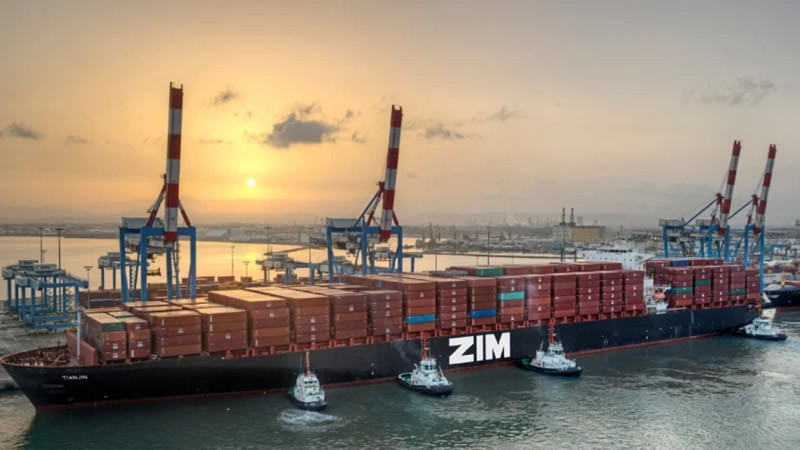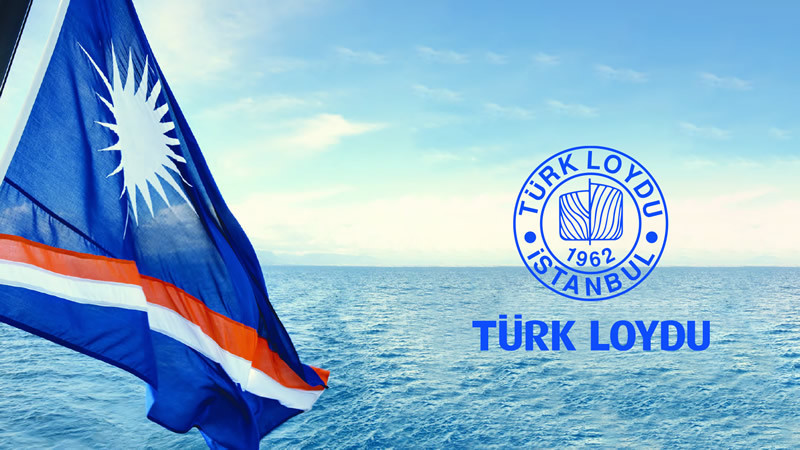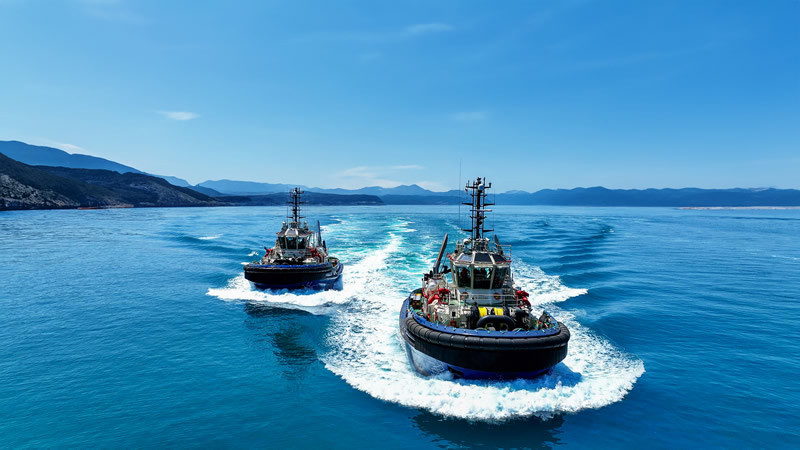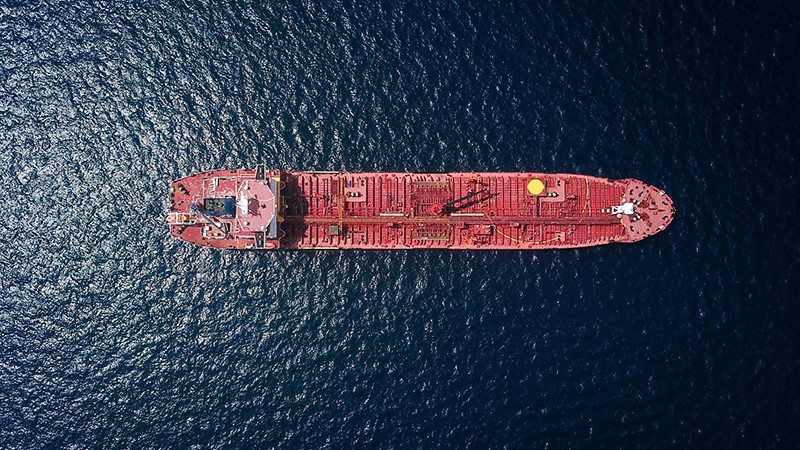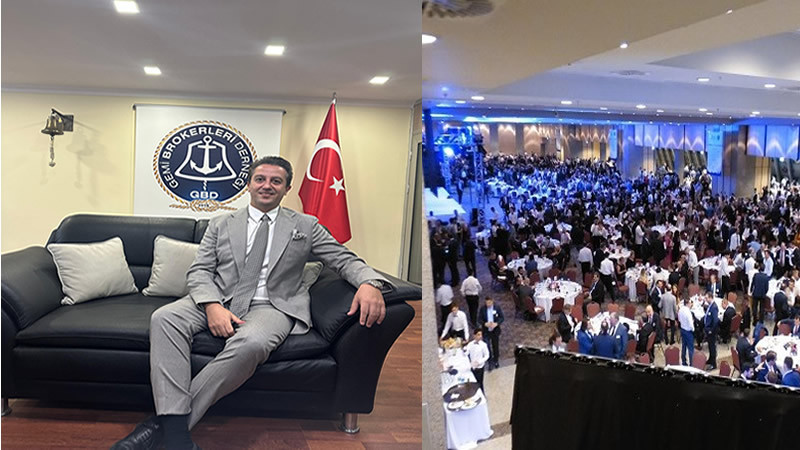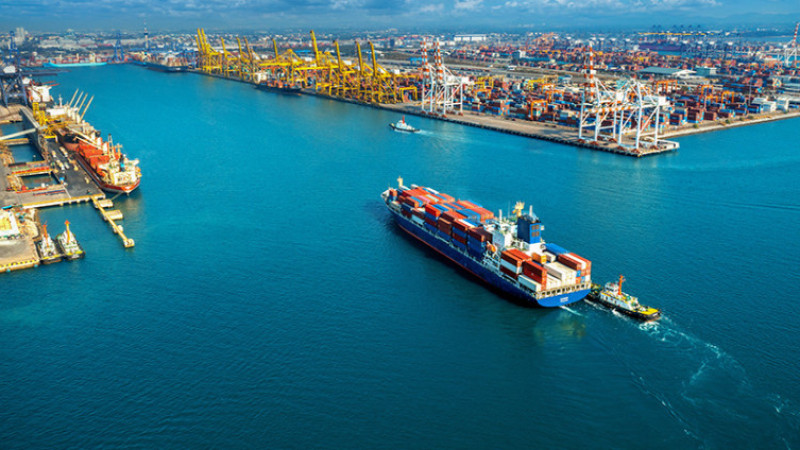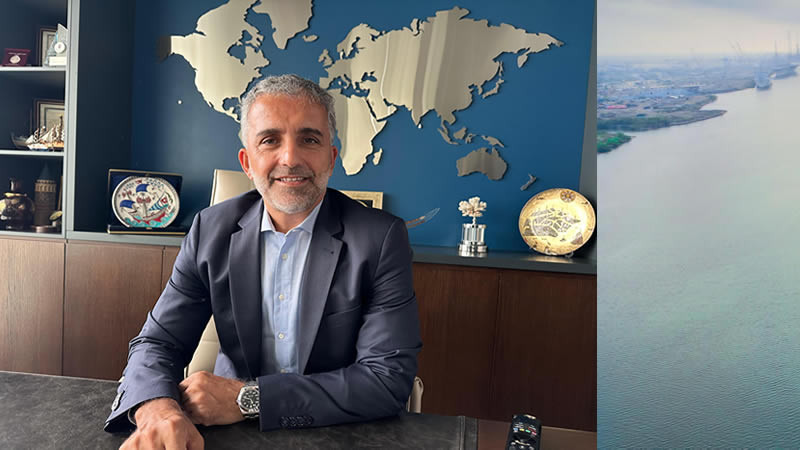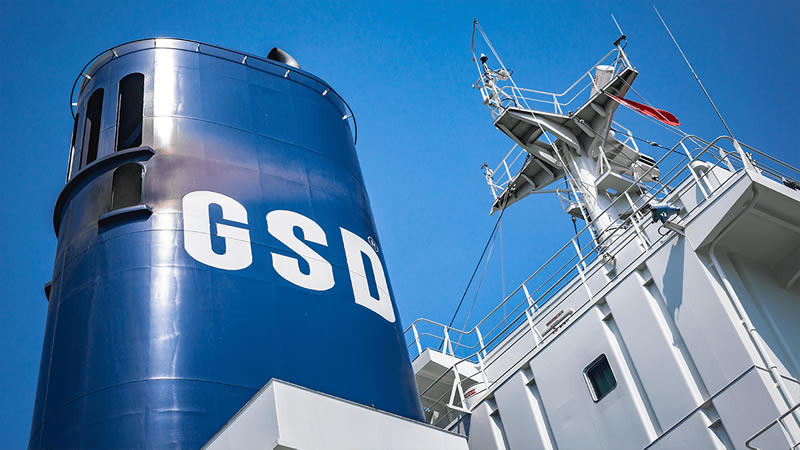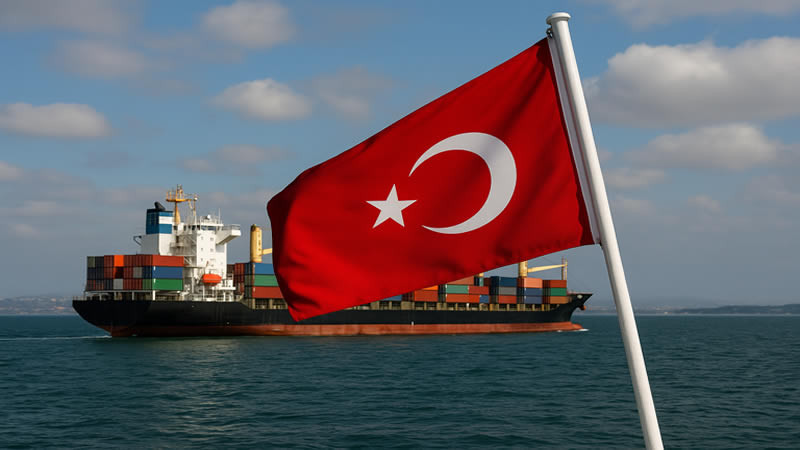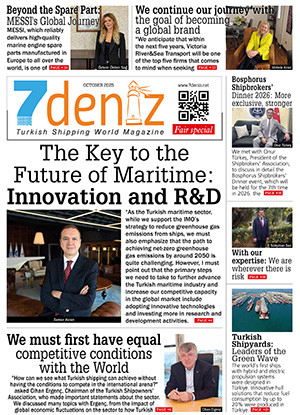The Future of Maritime Industry: Autonomous Marine Vehicles
In the age of technology, significant improvements are being made to transform the maritime industry.
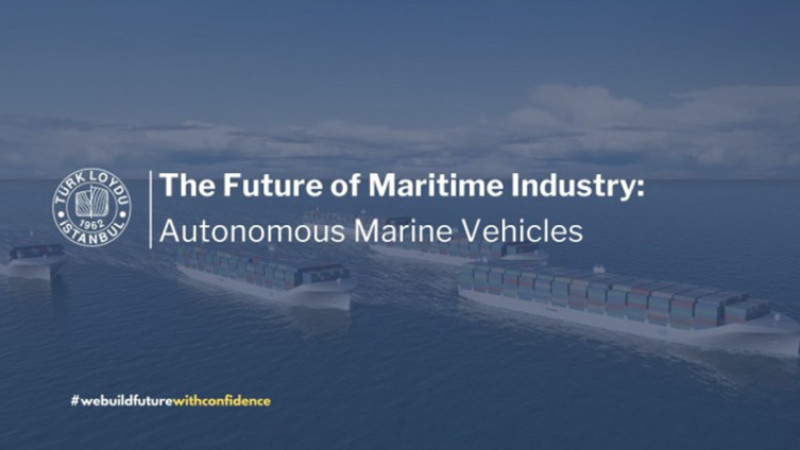
In the age of technology, significant improvements are being made to transform the maritime industry. Compared to traditional maritime transportation, autonomous marine vehicles technology offers a brand new perspective on transportation and exploring the depths of the oceans.
Throughout this newsletter, we will provide an overview of the working principles and uses of autonomous marine vehicles and what they may offer in the future. We will also examine how the International Maritime Organization (IMO) approaches developments in this field and plans for new regulations. Taking into consideration their impact on ocean exploration and conservation, oceanography, and maritime transportation, we will also share our thoughts on the potential of autonomous marine vehicle technology in the future.
The Use of Autonomous Technologies in Maritime Vehicles

Rolls-Royce autonomous ship Project
Autonomous technologies on ships represent a significant transformation in the maritime industry. Human-dependent operations on traditional ships have become more efficient, safe, and environmentally friendly through the integration of autonomous technologies.
As artificial intelligence technologies continue to advance, an increasing number of marine vessels are being equipped with automated systems that allow them to navigate autonomously with minimal human input. This will revolutionize the way people use marine vehicles, enabling them to operate more independently.
Autonomy Levels

Autonomous technology is defined as the ability of vehicles to operate without human intervention. Just like for other vehicles, there are specific autonomy levels for maritime vehicles. These levels define how independently the vehicles can operate.
In autonomous marine vehicles, the four levels defined by the International Maritime Organization (IMO) are as follows:
Degree One: Ship with automated processes and decision support: Seafarers are on board to operate and control shipboard systems and functions. Some operations may be automated and at times be unsupervised but with seafarers on board ready to take control.
Degree Two: Remotely controlled ship with seafarers on board: The ship is controlled and operated from another location. Seafarers are available on board to take control and to operate the shipboard systems and functions.
Degree Three: Remotely controlled ship without seafarers on board: The ship is controlled and operated from another location. There are no seafarers on board.
Degree Four: Fully autonomous ship: The operating system of the ship is able to make decisions and determine actions by itself.
AUTONOMOUS VEHICLE TECHNOLOGIES USED IN MARITIME VESSELS

Autonomous marine vehicles are typically equipped with various sensors, cameras, GPS, stability, and navigation systems. Through these systems, they can perceive their surroundings, detect obstacles, determine their routes, and communicate if necessary. Such vehicles can perform complex tasks thanks to the by combination of artificial intelligence, machine learning, and automation technologies. The development of autonomous marine vehicles can offer significant benefits for managing maritime traffic, preserving natural habitats, and various industries.
Here are some fundamental systems used in autonomous marine vehicles:
Autonomous Control System

Autonomous navigation systems are used to plan routes, control speed, maneuver, and ensure safe navigation for marine vehicles. These systems assist the vehicle in executing predefined routes and tasks accurately and effectively.
Key features of autonomous control systems include:
● Path Following: This system enables the vehicle to follow a predetermined route, ensuring that the vehicle progresses along the desired path using GPS and other navigation sensors.
● Speed Control: Speed control in autonomous marine vehicles ensures that the vessel travels at specific speeds, which is crucial for safe and efficient navigation.
● Maneuvering Systems: Autonomous vehicles use specialized algorithms to perform turns and other maneuvers, facilitating effective vessel movement.
● Obstacle Avoidance Systems: Vehicles equipped with sensors and cameras can detect obstacles and perform avoidance maneuvers, reducing the risk of collisions—a critical feature.
● Automatic Docking/Departure: Some autonomous marine vehicles can automatically dock or depart from ports. These systems streamline port operations by managing precise maneuvers.
● Automatic Route Adjustment: Autonomous vehicles can update their routes in response to environmental changes, such as weather conditions or traffic situations.
● Consideration of Environmental Factors: Environmental factors like weather conditions and sea state are taken into account by autonomous control systems to adjust movements accordingly.
Remote Control Centers

In autonomous marine vehicles, control centers are central locations that oversee the movement and actions of the vessel. Control centers collect data from the vehicle's sensors and use this information to perceive the vehicle's surroundings and facilitate safe navigation. These centers include software to assist the vehicle in carrying out its tasks.
Control centers for autonomous marine vehicles are typically located on land, but there are also developments in placing control centers on the seabed or on the vessel's deck.
Some key functions of control centers for autonomous marine vehicles include:
Monitoring the vehicle's position, direction, and speed: Control centers keep track of the vessel's location, heading, and speed to ensure it is on the correct path.
Sensing the surroundings and identifying potential threats: Control centers use data from the vehicle's sensors to detect objects and potential threats in the vicinity.
Controlling the vehicle's movements and actions: Control centers have the capability to control the vessel's movements, making sure it adheres to its mission objectives and navigates safely.
Facilitating the execution of the vehicle's tasks: Control centers play a crucial role in assisting the vehicle in carrying out its tasks effectively.
Control centers for autonomous marine vehicles play a significant role in the development and proliferation of such systems. These systems continue to be improved to ensure the safe and efficient operation of autonomous marine vehicles.
Some features of control centers for autonomous marine vehicles include:
● High-performance processing and computation capabilities: Control centers must efficiently process large amounts of data from the vehicle's sensors.
● Security and reliability: Control centers are designed to ensure the safety and reliability of the vehicle.
● Flexibility and adaptability: Control centers should be adaptable for different types of autonomous marine vehicles and missions.
Sensors

Autonomous marine vehicles use various types of sensors to perceive their environment. These sensors include cameras, LIDAR (Light Detection and Ranging), radar, ultrasonic sensors, thermal cameras, and acoustic sensors. These sensors assist the vehicle in detecting objects, obstacles, other marine vessels, and weather conditions in its surroundings.
Sensor technologies used in autonomous marine vehicles can be classified as follows:
● Image Processing Sensors: Image processing sensors, such as cameras or LIDAR sensors, detect objects and obstacles in the environment using data from these sensors. They enable autonomous marine vehicles to "see" the area around them and navigate without colliding with obstacles.
● Ultrasonic Sensors: Ultrasonic sensors use sound waves to detect objects and obstacles in the nearby environment. They help autonomous marine vehicles perceive their close surroundings and navigate without collisions.
● Radar Sensors: Radar sensors use electromagnetic waves to detect objects and obstacles in the vicinity. These sensors enable autonomous marine vehicles to detect objects and obstacles at greater distances.
● GPS Sensors: GPS sensors determine the vehicle's position and speed by using signals from 24 satellites orbiting the Earth. This information is used by autonomous marine vehicles to follow routes and reach designated targets.
● IMU Sensors: IMU (Inertial Measurement Unit) sensors measure the vehicle's acceleration, orientation, and angular momentum. This data is used to track the vehicle's movements and maintain its balance.
● Load Sensors: Load sensors measure the vehicle's cargo load. This information helps autonomous marine vehicles maintain balance and optimize performance.
● Weather Sensors: Weather sensors measure weather conditions. This information assists autonomous marine vehicles in safe and efficient navigation.
USES OF AUTONOMOUS MARINE VEHICLES

Autonomous marine vehicles are also used in commercial applications. These vehicles are used in various fields such as cargo transportation, fishing, environmental protection, search and rescue, and tourism. Autonomous marine vehicles can perform tasks like transportation, fishing, and search and rescue more efficiently and cost-effectively.

One of the most common applications of autonomous marine vehicles is in military operations. These vehicles are used in missions such as reconnaissance, surveillance, mine clearance, submarine defense, and attack. Autonomous marine vehicles are safer and more effective due to their unmanned nature. They reduce the risk of human error, allowing naval forces to operate more efficiently.
The usage areas of autonomous marine vehicles continue to expand with the advancement of technology. These vehicles have the potential to be used in areas such as marine research, space exploration, and underwater construction.
Autonomous Surface Vehicles

Autonomous marine surface vehicles are vehicles that can autonomously travel on the water surface and perform various tasks. These vehicles can often operate through remote control or predetermined algorithms.
Here are some features of autonomous marine surface vehicles:
Autonomous Mobility: Autonomous marine surface vehicles can follow predetermined routes or adapt their movements based on their environment without human intervention. This feature allows the vehicles to operate independently.
Sensors and Detection Systems: These vehicles are equipped with various sensors such as GPS, radar, lidar, cameras, depth sensors, and other detection systems. These sensors continuously monitor their surroundings and collect data.
Data Collection and Communication: Autonomous marine surface vehicles can collect data such as seawater temperature, salinity, currents, weather conditions, and other environmental data. This data can be later analyzed and used for various applications.
Remote Monitoring and Control: These vehicles can be managed through remote monitoring and control systems. This allows operators to track the status of the vehicles, make route adjustments, and intervene if necessary.
Safety and Avoidance Systems: Vehicles may have automatic avoidance systems that detect other ships and obstacles in their vicinity, ensuring safe travel.
Long Range and Durability: Autonomous marine surface vehicles are often designed to perform long-duration missions. They typically have long-range capabilities and energy efficiency.
Customizability: These vehicles can be designed and configured for different tasks, making them versatile for use in various industries and applications.
Environmental Sensitivity: Autonomous marine surface vehicles can be used for environmental monitoring and protection purposes. They can contribute to efforts such as monitoring marine pollution, observing marine life, and tracking environmental changes. Reliability and Automation: By reducing the risk of human error, autonomous marine surface vehicles can perform tasks more safely and consistently. Automation can make operations more effective and efficient.
Maritime Industry: Autonomous marine surface vehicles can be used in maritime trade, ship route monitoring, submarine cable maintenance, port operations, and other maritime activities.
Examples of commercial autonomous marine vehicles from around the world include:
Rolls-Royce Autonomous Ship Projects

Autonomous ferry named "Utrecht" developed by Rolls-Royce
Rolls-Royce is one of the world's leading companies in the field of autonomous ship technologies. Since 2012, they have been conducting an extensive research and development program for the advancement of autonomous ship technologies. As part of their autonomous ship project, Rolls-Royce has conducted various tests and trials. In 2016, an autonomous ferry named "Utrecht," developed by Rolls-Royce, completed its first autonomous ferry voyage in the Netherlands. In 2017, an autonomous cargo ship named "Neptune," also developed by Rolls-Royce, completed its first autonomous cargo ship voyage in Norway.
Rolls-Royce is actively working towards the commercialization of autonomous ship technologies. They aim to have autonomous ships commercially used in international waters by 2025 and in the open ocean by 2030.
Zero Crew, Zero Emissions: The Worlds First Electric Cargo Ship YARA BIRKELAND

The World's First Electric Cargo Ship YARA BIRKELAND
Norwegian chemical company Yara has successfully completed the inaugural voyage of the world's first fully autonomous and electric cargo ship, the Yara Birkeland. Yara has not only achieved zero emissions but has also created a vessel with zero crew.
The efforts of Yara Birkeland will contribute to global climate initiatives by preventing the emission of approximately 678 tons of carbon dioxide annually. The ship, which was introduced to the media on November 20, 2021, transported 120 containers of fertilizer from a factory in Porsgrunn to Brevik Port. This has eliminated the emissions equivalent to about 40,000 truck journeys per year. The 80-meter-long, 3,200-ton vessel underwent two years of trials to enhance its self-maneuvering capabilities. The ship's captain's cabin may also become obsolete in the near future.
SOLEIL Ferry
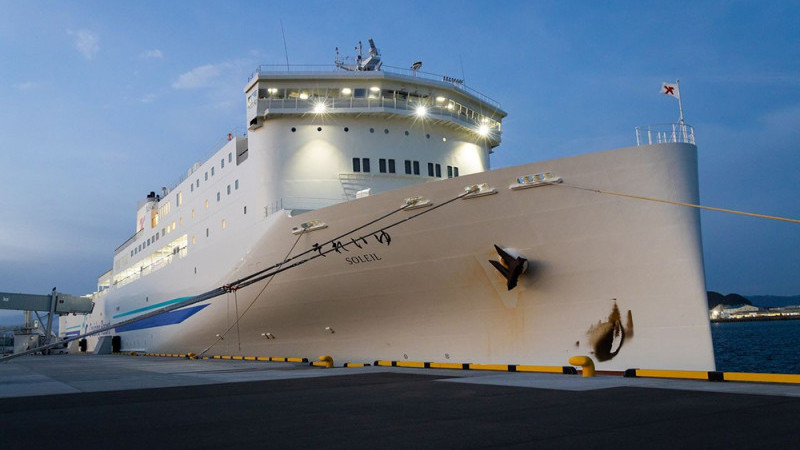
SOLEIL, the world's first and only autonomous hybrid electric ferry
SOLEIL is the world's first and only autonomous hybrid electric ferry. Built in 2020, the ferry operates in the Normandy region of France. SOLEIL is 80 meters long and 15 meters wide, capable of carrying 130 passengers and 20 cars. The ferry operates with electric motors and diesel generators. Electric motors are used at low speeds and short distances, while diesel generators come into play at high speeds and long distances.
SOLEIL is equipped with advanced sensors, artificial intelligence, and machine learning technologies. These technologies assist the ferry in sensing its surroundings and navigating safely. SOLEIL has been operating regularly in Normandy since 2020 and serves as an example of the future of the maritime industry.
Autonomous Submersible Vehicles (Hybrid Vehicles)
These are vehicles that can operate both on the water surface and underwater. They can collect data while on the surface and conduct more detailed observations and data collection when submerged.
For military applications, autonomous submersible vehicles are being developed for tasks such as reconnaissance, surveillance, mine clearance, submarine defense, and attack. These vehicles are safer and more effective due to their unmanned nature, reducing the risk of human error and enabling naval forces to operate more efficiently.
For commercial applications, autonomous submersible vehicles are being developed for areas such as cargo transportation, fishing, environmental protection, search and rescue, and tourism.
Legal Studies for Unmanned Maritime Vehicles in International Maritime Law

Unmanned maritime vehicles (UMVs) have the potential to revolutionize the maritime industry. Because they can operate without human intervention, they can eliminate human errors and work more safely and efficiently. UMVs can also reach more distant and
hazardous areas and collect more data, creating new opportunities in the maritime industry and enhancing maritime safety.
However, the development and widespread use of UMVs also pose some challenges in terms of international law. Are these vehicles subject to the existing rules of international maritime law? How will the operation and control of UMVs be carried out? How will the use of UMVs affect maritime safety and the environment? Various studies are being conducted in the field of international law to find answers to these questions. These studies aim to develop principles and standards for determining the legal status, operation, and control of UMVs.
The United Nations Convention on the Law of the Sea (UNCLOS) is the fundamental source of international maritime law. UNCLOS regulates the definition of ships and the rights and obligations of ships. According to UNCLOS, for a vessel to be considered part of maritime law, it must meet certain criteria. One of these criteria is that the vessel must be registered by a state. Another criterion is that the vessel must have certain dimensions and structure. UMVs may be subject to UNCLOS because they meet these criteria. However, since UNCLOS does not specifically regulate UMVs, there is some uncertainty in determining their legal status.
The International Law Commission (ILC) is conducting studies to determine the legal status of UMVs. The ILC's report on UMVs was discussed at the General Assembly in April 2023. The report stated that UMVs have the potential to be subjects of international law, but this potential has not yet been fully realized. The report indicated that further work is needed to determine the legal status of UMVs.
After the discussion of the report, the General Assembly decided to continue the work on UMVs. In this context, the ILC was requested to prepare a draft convention by 2024.
The proper operation of UMVs in accordance with the rules of maritime law is essential for maritime safety and the development of the maritime industry. IMO (International Maritime Organization) continues its work on ensuring that UMVs are operated in compliance with maritime law.
IMO Maritime Autonomous Surface Ships (MASS) Code

The IMO MASS Code is a goal-based code being developed by the International Maritime Organization (IMO) to regulate the operation of autonomous surface ships. The code is planned to be approved as a non-mandatory instrument in the second half of 2024. In addition, the code is planned to be adopted in the first half of 2026 and as a mandatory code entering into force from January 1, 2028. The code will be primarily applicable to SOLAS cargo ships.
The development of the IMO MASS Code began following a decision by the Maritime Safety Committee in line with the results of a Regulatory Scoping Exercise (RSE) completed in 2021 regarding MASS operations. The RSE aimed to determine how the safe, secure, and environmentally sensitive operation of MASS could be addressed within IMO rules. The RSE was conducted in two steps to assess how the existing regulatory framework might be affected in addressing MASS operations. In addition to the outcome of the RSE, it was considered that addressing MASS within the IMO rules by individually addressing each regulation or SOLAS chapter might lead to inconsistencies, confusion, and potential barriers
to the application of existing regulations to conventional ships. Therefore, it was evaluated that it would be preferable to comprehensively address MASS through the development of goal-based MASS rules.
The Code will cover a wide range of topics, including but not limited to:
● General: Application, Relationship with Other IMO Instruments, Terminology and Definitions, Certification, and Survey.
● Principles of MASS and MASS Functions: Operational Scope, Safe States for the Ship, Necessary Functions for MASS, Risk Assessment, and System Design Principles.
● Objectives, Functional Requirements, and Regulations: Navigation, Remote Operations, Communication, Compartmentation, Stability, Watertight Integrity, Fire Protection and Safety, Life-Saving Appliances and Equipment, Safe Operation Management, Ship Operations Control, Security, Search and Rescue, Cargo Handling, Crew Safety and Comfort, Towing and Mooring, Machinery, Electrical and Electronic Systems, Maintenance and Repair, Emergency Response, and Crew Care.
● Special Rules for the Remote Control of Ship Functions: Remote Operation and Control Centers.
● MASS Experience: Temporary Guidance for MASS Experience.
Working and correspondence groups have been established under the IMO MASS agenda item to expand the studies and develop common positions on various issues.
Türk Loydu's Work in the Field of Autonomous Marine Vehicles
Türk Loydu initiated its work on autonomous marine vehicles in the context of commercial ships, both domestically and internationally, between 2018 and 2019. Türk Loydu is still actively engaged in these efforts. Within the context of Türkiye, Türk Loydu collaborated with various sector stakeholders to develop a roadmap supported by TUBITAK. They have also contributed their perspectives on the development of regulations and standards. On the international front, Türk Loydu participates in working and correspondence groups established under the International Maritime Organization (IMO), including those related to the MASS Code and its pre-development efforts and currently contributes to international regulation development in this field.

In naval ships, Türk Loydu is actively involved in setting safety standards for autonomous naval systems as part of the working group established by the International Naval Safety Association (INSA). In this context, Türk Loydu collaborate with other member navies and classification societies to define safety standards for autonomous military systems. In parallel with Turkiye's efforts in autonomous ships, Türk Loydu has also participated in various unmanned marine vehicle projects, providing classification and certification services for these projects.
Türk Loydu is currently certifying different versions of IPMS (Integrated Platform Management System) systems and Radar System & Navigation Consoles which have already been certified for conventional ships for use in autonomous ships.
By continuing its work in the field of autonomous marine vehicles, Türk Loydu aims to further enhance Turkiye's competitive strength in this domain.
Future Potential of Autonomous Marine Vehicles
In terms of future potential, autonomous marine vehicles can have transformative effects in various sectors. In maritime transportation, they can optimize logistics processes by providing a safer, faster, and more efficient transportation system. They enable an increase in trade volume and a reduction in cargo transportation costs, supporting economic growth. Additionally, autonomous marine vehicles can enhance the environmental sustainability of the maritime sector. Their low-emission and energy-efficient designs minimize environmental impacts while contributing to the preservation of oceans and marine ecosystems. By reducing environmental impact in the seas, they can support biodiversity conservation.
Autonomous marine vehicles can be used across a wide range of applications, from search and rescue operations to maritime surveillance, scientific research, and underwater exploration. Their capabilities for exploration, observation, and data collection in marine environments can provide significant support to researchers, scientists, and maritime security agencies.
In conclusion, the future potential of autonomous marine vehicles is vast and diverse. This technology has the potential to transform the maritime sector, moving us towards a safer, more efficient, and environmentally friendly future. Furthermore, its applications in various sectors can have a significant impact.
TURK MARINEWS



